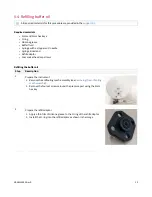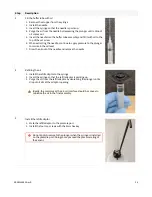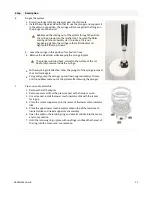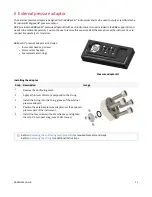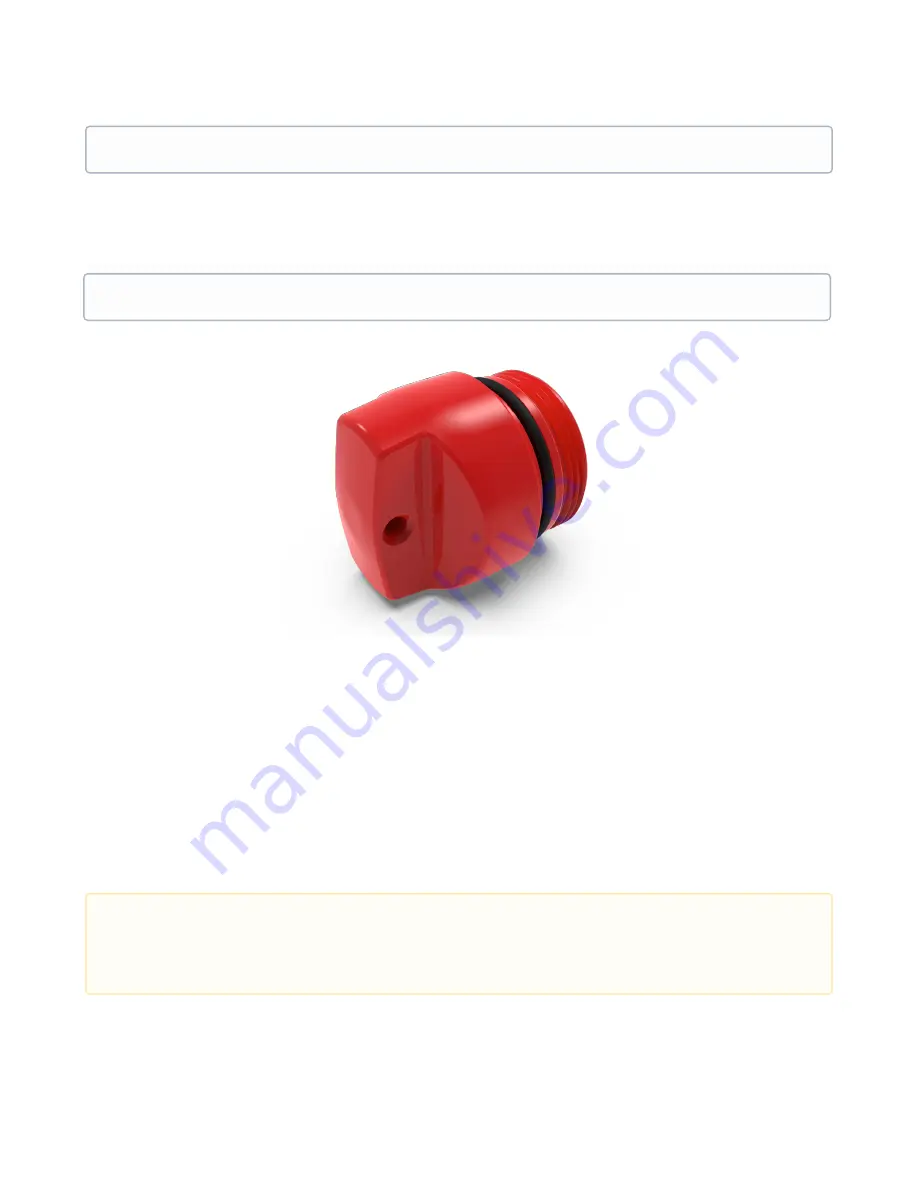
RBR#0008818revB
15
•
•
•
4.2 Replacing the O-ring
Care for the O-ring is the single most important item of maintenance on any submersible RBR instrument. A water leak
can damage the circuit board beyond repair and cause complete data loss. Every instrument's seal depends upon its O-
ring, not the end-cap tightness. Therefore, proper O-ring maintenance is crucial.
.
.
Location of the O-ring
To access the O-ring, open the instrument.
.
Inspecting the O-ring
Visually inspect the new O-ring for nicks and scratches before installing it. Pay attention to the following areas:
The surface of the O-ring itself
The mating surface on the inside of the case between the threads and the open end
The groove in the end-cap where the O-ring sits
.
.
Refer to
Opening and closing the instrument
for details on accessing the O-ring.
The O-ring removal tool and silicon compound are available in the
The O-ring may lose elasticity over time, even when the instrument is not deployed. RBR strongly recommends
replacing the O-ring regularly.
Avoid using any object that could scratch the O-ring or any of its mating surfaces.
If dirt is present in the O-ring groove, remove the O-ring as described below and thoroughly clean the groove.
Do not return this old O-ring to the instrument! If you remove the O-ring from the instrument for any reason,
always replace it with a new one.
If the surfaces of the O-ring groove are scratched, pitted, or damaged, contact RBR for advice.























